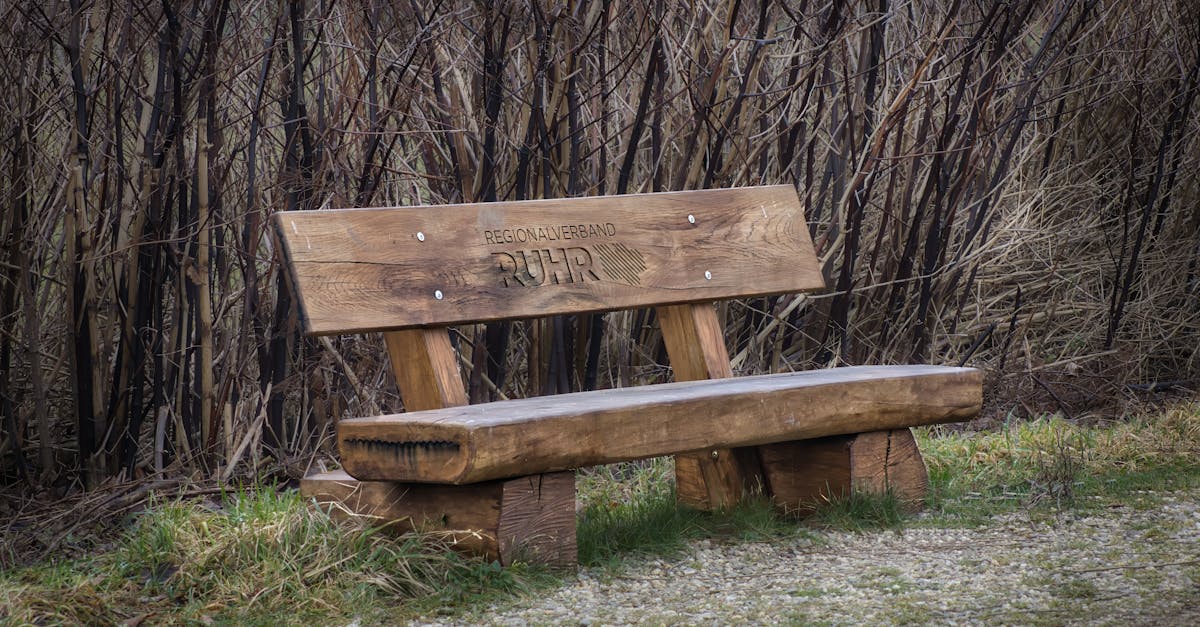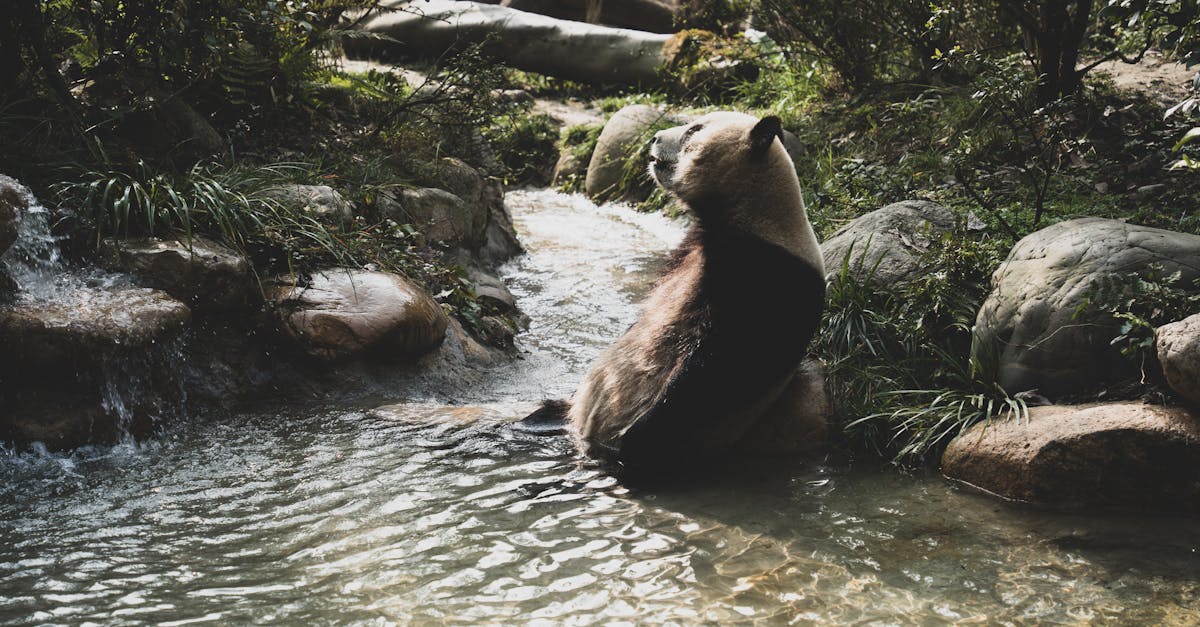Imagine stepping into a serene forest, feeling a gentle breeze on your face, and hearing the soft rustle of leaves around you. Nature-based rehabilitation might promise healing and serenity, but are you making mistakes that could hinder your progress? The powerful connection between nature and well-being can be transformative. However, without understanding how to properly engage with these therapeutic practices, you might miss out on their full potential.
It’s easy to become overwhelmed by terms like ecotherapy, wilderness therapy, or even forest bathing. Therefore, how do you know which approach best suits your needs? You deserve to understand the nuances of outdoor rehabilitation, considering both its benefits and pitfalls. From increasing your emotional resilience to reducing stress, nature offers countless gifts. So, are you ready to leverage these insights to improve your mental health? Dive in and discover how to harness nature’s therapeutic power effectively.

Photo provided by Wolfgang Vrede on Pexels
Within the article
Understanding Nature-Based Rehabilitation
Nature-based rehabilitation is a wonderful way to heal and grow. This practice uses the power of nature to help you recover and find peace. By spending time outdoors, you can connect with yourself and the world around you. It uses various techniques and activities to promote healing and well-being. This approach is about more than just walking in the park. It involves mindful practices that focus on your relationship with nature.
Importance of Nature
Nature is soothing and powerful. It has a unique way of calming your mind and healing your soul. When you spend time in nature, your stress levels can drop. The gentle rustle of leaves and the chirping of birds can provide a sense of calm and peace.
Connecting with the environment is important. When you are outside, take a moment to breathe deeply and look around. Notice the colors, sounds, and the feel of the air on your skin. These moments can help you feel grounded and present. Therefore, finding peace outdoors helps you recharge and refresh.
Types of Ecotherapy
Ecotherapy includes various practices that involve nature. These practices are designed to improve your health and well-being. Some popular forms include walking in the woods, gardening, and even sitting quietly in a park. You can integrate these activities into your daily life. For example, you can take a short walk outside during lunch breaks. Such simple actions can make a big difference in your overall mood and stress levels.
Outdoor Rehabilitation Techniques
Outdoor rehabilitation techniques can be highly effective. They include activities like hiking, biking, and other outdoor exercises. Embrace the fresh air and sunlight as you engage in these activities. Moving your body in nature can boost your mood and improve physical health. Plus, spending time outside allows you to enjoy the beauty of the natural world.
Overall, these methods aim to help you feel better both physically and mentally. When you are outside, every step you take can be a step toward better health.

Photo provided by Aymerik Grenier on Pexels
Common Pitfalls in Ecotherapy
While ecotherapy is beneficial, it is important to avoid some common mistakes. Proper understanding of its methods is crucial. Knowing what to do and what not to do can enhance your experience.
Misunderstanding Wilderness Therapy
Wilderness Therapy is often misunderstood. It is more than just hiking in the woods. This therapy involves structured activities designed for healing. Focus on guided mediation and mental tasks along with physical activities. A balance between different types of activities is important for success.
Here are a few steps to ensure you stay on track:
- Plan activities carefully.
- Set realistic goals for yourself.
- Track your progress regularly.
Avoiding these missteps can make your journey more effective. Ensure that your experiences are meaningful by being mindful and prepared.

Photo provided by Chris Duan on Pexels
Integrating Green Exercise
Combining Fitness with Nature
Green exercise is a fantastic way to combine fitness with nature. It goes beyond just jogging or running outside. Think of it as a way to do your workouts while enjoying the beauty of the outdoors. Activities like hiking, cycling, or even yoga in a park are great examples. This combination allows you to enjoy the best of both worlds: staying fit and enjoying the environment.
Maximizing Health Benefits
Exercising outdoors has many health benefits, especially for your mental health. Being in nature can help reduce stress, improve mood, and increase feelings of happiness. It’s important to stay connected to your natural surroundings. When you exercise outdoors, pay attention to the scenery, feel the breeze, and absorb the sunlight. These sensory experiences enhance the positive effects of your workout.
Moreover, using equipment made for outdoors, like bikes or hiking poles, can improve your experience. You’ll get the most out of your exercise when you are comfortable and prepared for outdoor conditions.

Photo provided by Engin Akyurt on Pexels
Embracing Nature Therapy
Forest Bathing Practices
Forest Therapy, also known as Shinrin-yoku, involves mindful walks in the forest. It is about immersing yourself in nature and engaging all your senses. When you walk through the forest, notice the tall trees, the singing birds, and the rustling leaves. Embrace all senses to feel more connected and calm. This practice can significantly reduce stress and improve mental clarity.
Setting Up Eco-Rehabilitation Sessions
Designing eco-rehabilitation sessions requires thought and planning. Focus on sustainable practices to ensure your sessions are beneficial and environmentally friendly. Create plans that consider the needs of each individual. The idea is to help people connect with nature while promoting overall wellness.
Think of activities such as gardening, nature walks, or meditative exercises outdoors. These can have a profound effect on both body and mind.
Benefits of Environmental Therapy
Environmental therapy is all about using nature to support healing. This approach encourages responsibility towards the environment. When you engage in this therapy, you learn to appreciate the natural world and take steps to protect it. It’s about understanding that your well-being is connected to the health of the planet.
As you practice environmental therapy, think about ways you can contribute to the environment. Simple actions like planting trees or cleaning up parks can make a difference.
Nature Healing Techniques
Nature healing techniques involve using natural elements to promote well-being. These methods are often integrated into therapy sessions to enhance healing. Some techniques include using plants, water, or natural sounds. When you incorporate these into therapy sessions, you create a calming atmosphere for healing.
Consider using nature sounds or visualizing peaceful natural settings during meditation. These small additions can greatly improve the therapeutic experience.

Essential Tools for Successful Therapy
Having the right tools and mindset is key to successful therapy. These tools help you create a meaningful experience that promotes healing and growth.
Choosing the Right Environment
The environment you choose for therapy sessions is crucial. Select nature-rich locations that offer clear air, beautiful sights, and calming sounds. However, safety and accessibility are important factors to consider. Ensure that the location is safe and easy to reach for you and others involved. A good environment can significantly enhance the effectiveness of your therapy sessions.

Photo provided by Yan Krukau on Pexels
Setting Realistic Goals
Understanding Client Needs
In any therapy, understanding client needs is essential. Align goals with the personal needs of the individual. Everyone is unique, and their therapeutic journey should reflect that. Take time to assess what each person hopes to achieve. This understanding helps in setting realistic and attainable goals for the therapy sessions.
Tracking Progress
Regularly monitoring and adjusting strategies is important in therapy. Tracking progress helps you see what is working and what needs improvement. It also provides motivation as you see how far you have come. Adjust strategies if necessary to ensure that everyone can achieve their goals. Be open to change and willing to try new approaches when needed.

Photo provided by Elle Hughes on Pexels
Building a Support Network
Engage with Like-Minded Individuals
Connecting with a network of like-minded individuals can enhance your therapy experience. Engage with nature enthusiasts, share experiences, and learn from each other. Being part of a community provides support and inspiration. It encourages you to continue your journey and try new things. Plus, you can find motivation and understanding from others who share your interests.

Photo provided by Maarten van den Heuvel on Pexels
Evaluating Therapy Outcomes
Assessing Nature-Based Rehabilitation
Assessment is a key part of nature-based rehabilitation. It involves looking at how the therapy is working and what can be improved. Evaluate the outcomes by considering both physical and mental changes. Ask questions like, “Do you feel more relaxed?” or “Have your stress levels decreased?”. This reflection helps you understand the effectiveness of the therapy and make necessary adjustments.
Learning from Experiences
Each therapeutic experience offers something to learn. Use feedback for improvement and growth. Consider what worked well and what didn’t. This process helps you and your therapist learn and enhance future sessions. It is an important step in personal growth and progress.
Adjusting as Necessary
Flexibility is key in therapy. Change strategies when it becomes clear that they are not as effective as hoped. Be open-minded and willing to try new methods. Everyone’s journey is unique, so what works for one person might not work for another. Being adaptable allows you to find the best path to healing and growth.

Spreading Awareness
Sharing Success Stories
Sharing success stories is a powerful way to spread awareness about nature-based rehabilitation. It shows others the positive impact it can have. Talk about your experiences and how nature has helped you heal and grow. Your story can inspire others to give nature-based therapy a try.
Promoting Benefits Widely
Promote the benefits of nature-based rehabilitation widely. Use platforms like social media, blogs, or community events to reach more people. Explain the advantages and share examples of its positive effects. The more people know about it, the more they might consider trying it. This way, the healing power of nature can reach more people who need it.
Wrap Up Your Nature Journey
Embracing nature’s healing power can transform your well-being. Outdoor experiences like ecotherapy and forest bathing help reduce stress, improve mental clarity, and boost your mood. These natural interactions offer a refreshing escape from daily routines, encouraging positive emotional changes. You gain not only physical benefits but also a deeper connection with the environment around you.
Start small by incorporating nature walks into your routine. Try spending more time in green spaces, such as parks or nearby forests. Consider joining a local group for outdoor activities or exploring sensory gardens in your area. These steps will help you integrate nature’s benefits into your life seamlessly. Don’t forget to keep an open mind and observe how nature influences your mood and health over time.
Step outside and begin your nature journey today. Feel the fresh air, enjoy the greenery, and allow nature to work its magic on you. Share your experiences with friends and invite them to join you for outdoor adventures. Remember, taking that first step into nature could be the key to a happier, healthier you.
